Historic Centre of Avignon: Papal Palace, Episcopal Ensemble and Avignon Bridge
By Leyla Alyanak
What is the Historic Centre of Avignon?
Avignon is a city that dances to the rhythm of history, culture, and the breezes of the Rhône River. The listing of the historical center of Avignon as a UNESCO World Heritage site confirms it as a site of irreplaceable value to humanity.
Disclosure: This article contains affiliate links. Making a purchase through an affiliate link will mean a small commission for this website. This will not affect your price. Privacy policy.
The city’s fame dates back to the 14th century, when the papacy in Rome, beset by political chaos, decided to move its headquarters there. This Avignon-based papacy, often called the “Babylonian captivity”, lasted around 70 years. During that time, the Papal Palace was built to accommodate the seven popes who would occupy it before the papacy moved back to Rome. Troubles would continue and Avignon would continue to play a major role in the papacy until 1417.
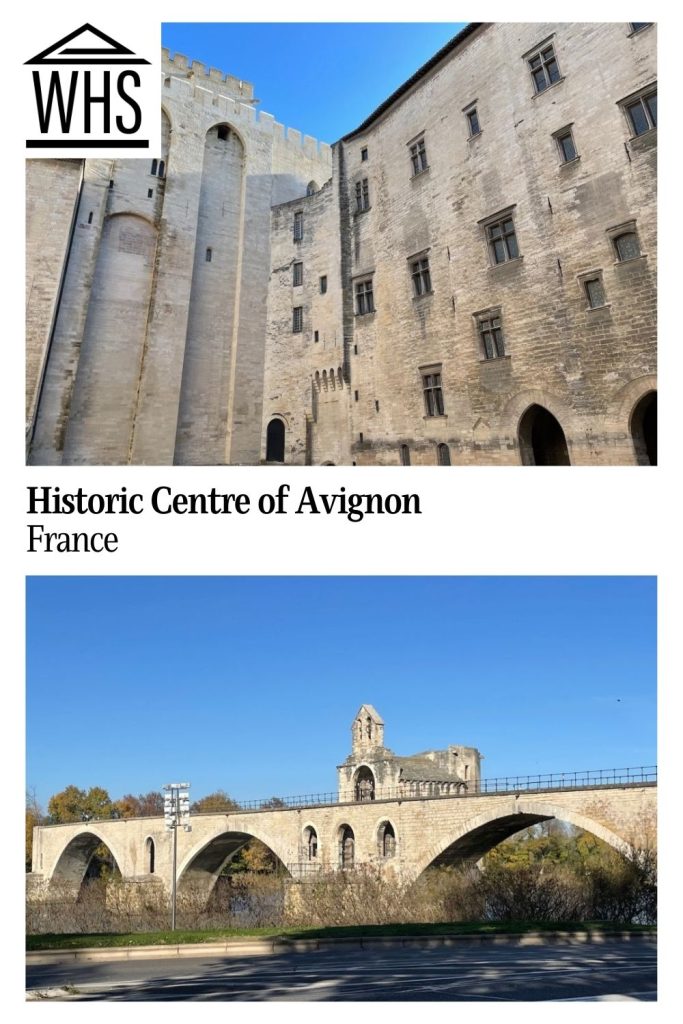
The French Revolution would end the palace’s religious vocation and use it for a variety of secular purposes.
This UNESCO site is made up of three separate venues: the Papal Palace, the Episcopal Ensemble, and the Saint-Bénézet Bridge, popularly known as Avignon Bridge. All three are part of the medieval core of the city of Avignon, in southern France. Together, they form a harmonious and historically significant whole.
The Papal Palace
This is more fortress than palace, its imposing walls shooting upwards to dizzying heights. As robust as these are, they contrast starkly with the delicate frescoes created within.
Not only did the popes live here, but their presence attracted the foremost intellectual and artistic talents of the time, turning Avignon into a major European crossroads and, for a while, into a global powerhouse.
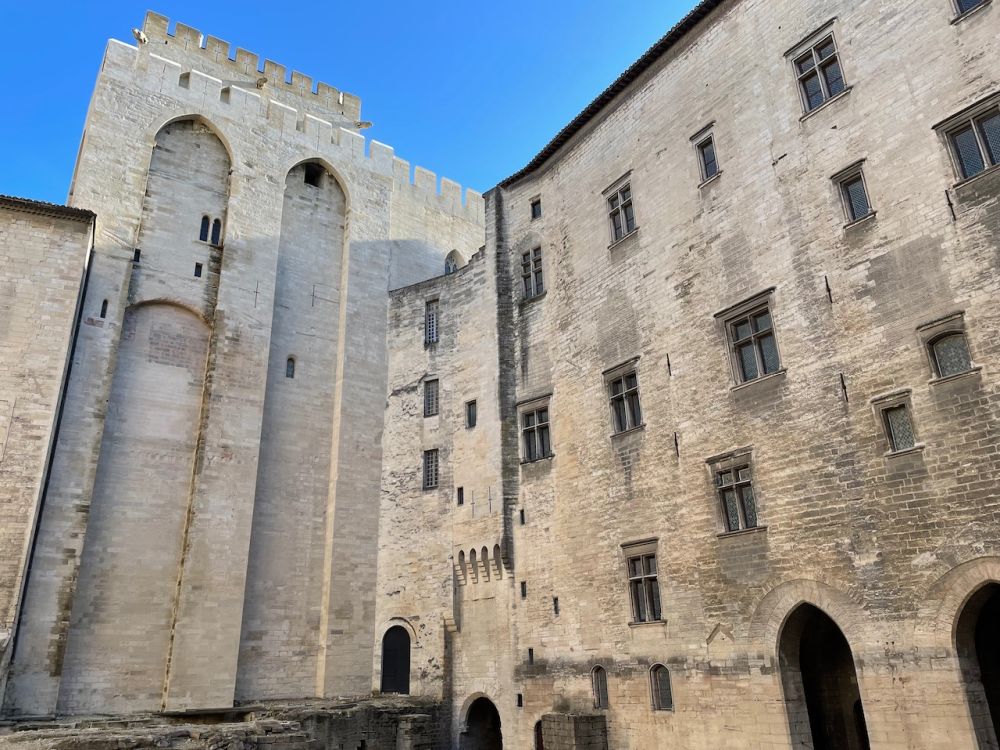
The Episcopal Ensemble
Located right next door, the Episcopal Ensemble includes the Cathedral of Notre-Dame des Doms and the Petit Palais. The Cathedral’s Romanesque architecture and gilded statue of the Virgin Mary provided a spiritual counterpoint to the political might of the Papal Palace. The Petit Palais, now a museum, once served as the residence for archbishops and is an architectural gem. Taken together, the palace and the ensemble provide a clear tableau of Avignon’s role as a major religious and administrative center.
Avignon Bridge
Formally called Saint-Bénézet Bridge, this is a marvel of medieval engineering. Today, only four of its original 22 arches remain, the power of the Rhône River having swept the others away. Still, it is an iconic part of Avignon’s heritage and a strong reminder of the city’s former power.
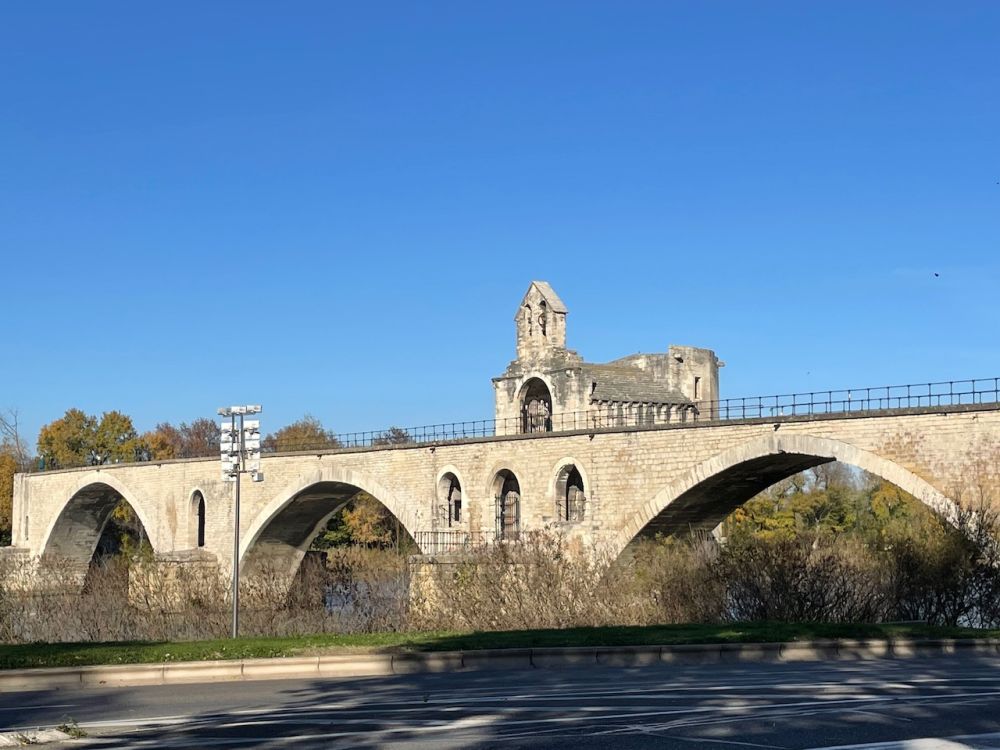
Why are these sites in Avignon a UNESCO World Heritage site?
The historic centre of Avignon is of course important for its history and architecture, but also for the way the structures interact to tell a multi-layered story. Each component contributes to the religious, political, commercial and cultural backstory of the city.
This is how UNESCO puts it: “Resulting from an exceptional episode in history, which involved the seat of the Church leaving Rome for a century, it played a major role in the development and diffusion of a particular form of culture throughout a vast region of Europe, during a time of primordial importance in the establishment of sustainable relations between the papacy and the civil authorities.”
For a time, Avignon was, in fact, the center of Europe – and given the times, of the known world. Avignon may have been a religious center, but for decades it was also a magnet for every other intellectual and cultural development.
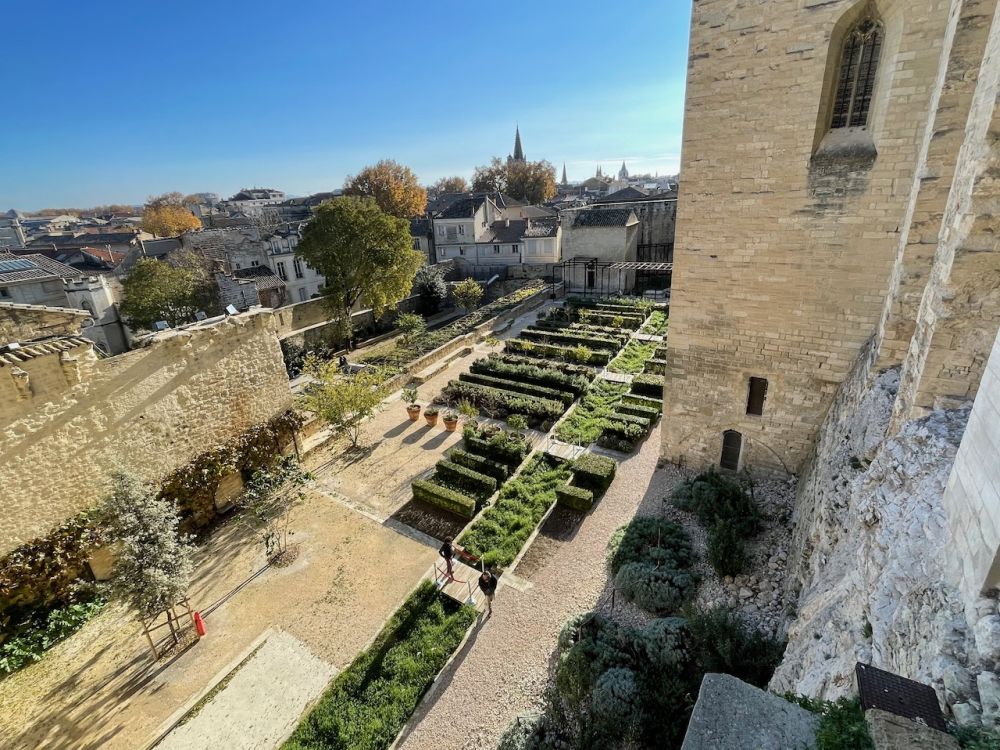
What can you expect on a visit to Avignon?
The historic centre of Avignon requires an in-depth visit – it isn’t an area you can breeze through in an hour. The sheer size of the complex defies speed, as does the fact that there are several sites to visit.
The sites are not far from one another, and can be visited in any order. Given the immensity of the Papal Palace and its sometimes overwhelming architecture, I might be tempted to begin with the more modest and ornate Episcopal Ensemble. Conversely, should you start with the Papal Palace, the other sites might appear small in comparison.
Prepare to be surprised by the size of the Papal Palace, whether the reception rooms or the exterior walls – a major medieval engineering feat. Given its multiple purposes, it’s not surprising that the palace served a variety of needs, from receptions and residences to chapels and gardens.
Once you have visited the ensemble and the palace, a walk down a curvy street will lead you to Avignon Bridge. This is really only a partial bridge, as it does not span the entire river. It is punctuated by a series of tiny chapels. Also, you can walk along a former guard path by following the stairs inside the bridge area. This will provide a view of the bridge from another angle.
Book a group walking tour or a private walking tour of Avignon.
Is the historic centre of Avignon worth visiting?
The papal complex is definitely worth a detour, not only for its imposing physical structure but also for the French and European historical and cultural roles it played during the Middle Ages. The bridge is of additional interest to many who may have heard the popular French children’s song, “Sur le pont d’Avignon”. If you happen to be heading to or from Provence, this is a “must-see” venue, especially if you are interested in history, culture, architecture or religion.
Tips for visiting Avignon
Avignon is a southern city and can be very hot in summer, whereas the inside of the Papal Palace and the Cathedral retain cool air. If it’s hot outside during the day, that would be the best time for a visit to interior sites.
Because Avignon Bridge is across a busy street from the Papal Palace, try to get there around sunrise. The light is better then, but also there’s less car traffic and you’ll have a better chance of snapping a perfect photograph from below.
Beware of the wind on the bridge. When it blows, it can be fierce enough to have to hang on to the railing.
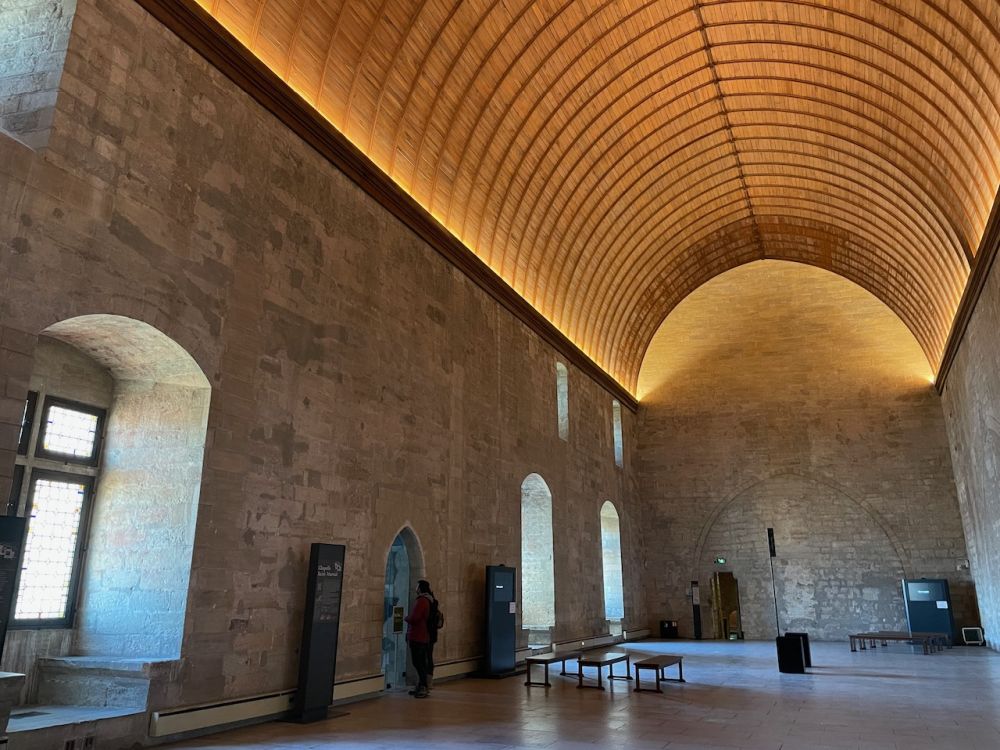
The UNESCO sites of Pont du Gard (a Roman aquaduct) and Arles (Roman and Romanesque monuments) are both quite near Avignon, so you might want to plan them into your trip.
Where is the historic centre of Avignon?
The historic centre of Avignon is right in the middle of the Old Town of Avignon. It’s impossible to miss, as it is well signposted.
By car: From Lyon to the north, you can drive to Avignon in about 2hrs 20min. To the south is Montpelier, a 1hr 15min drive. There are parking lots all around the central Avignon core (you can park in the center of the city but the streets are narrow and twisty so this is not recommended).
Compare rental car prices here.
By train: The easiest way to reach Avignon if you’re not driving is by train, with high-speed TGV trains from Lyon (1hr), Aix-en-Provence (just over an hour) or from Paris (2hr40min).
For more information about the historic centre of Avignon, see one of the official tourism websites.
Have you been to Avignon? If so, do you have any additional information or advice about this UNESCO World Heritage site? Please add your comments below!

